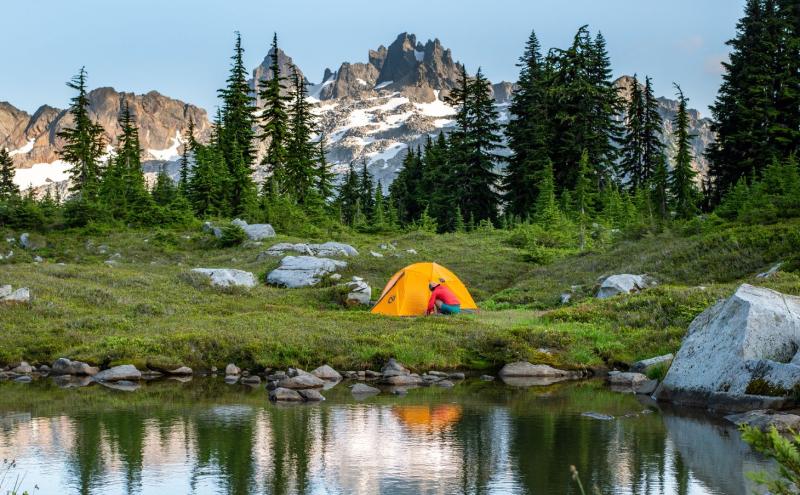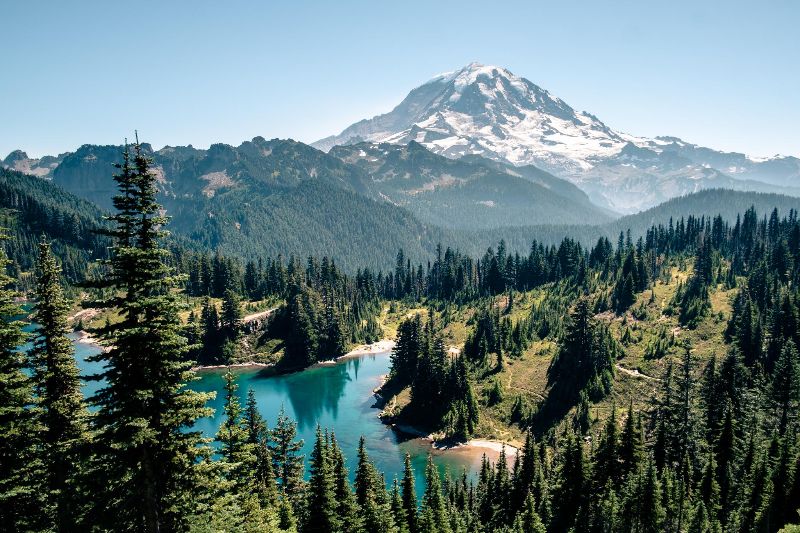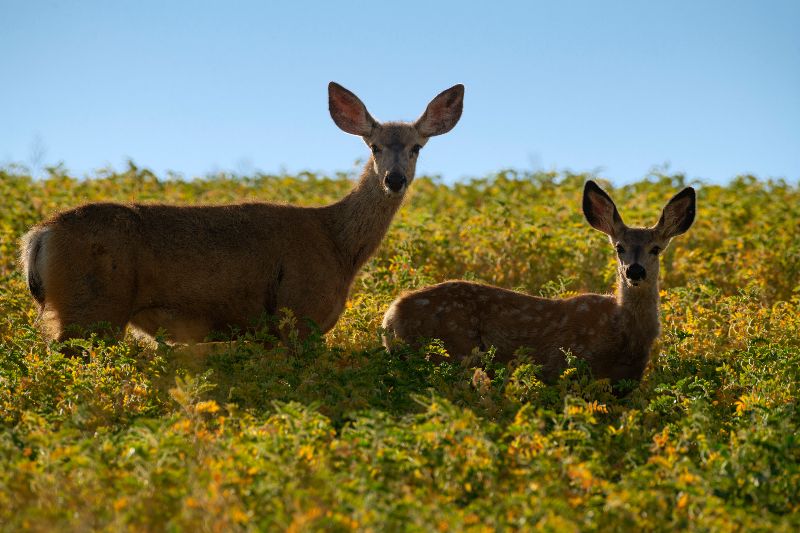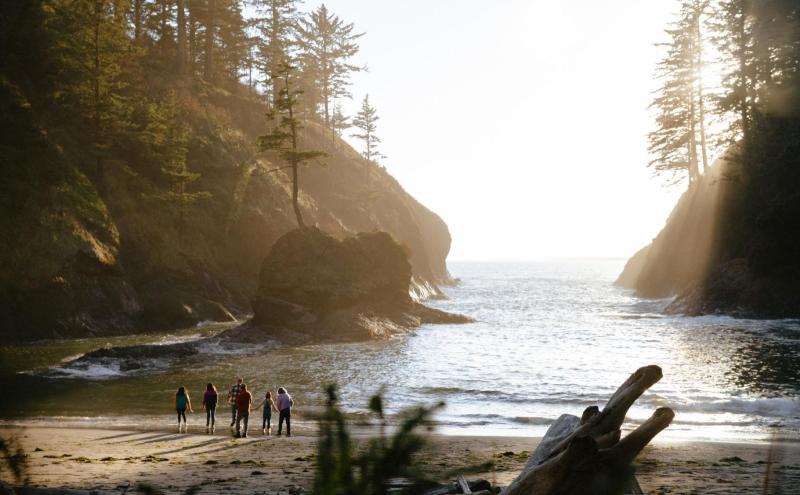
Adapted from the Responsible Travel Handbook, published by the Port of Seattle and partners
Washington State is a remarkable region that entices both domestic and international travelers with its extraordinary blend of natural wonders, cultural diversity, iconic places, urban centers and rural communities, and thrilling recreational adventure opportunities. From the Salish Sea’s incredible marine environment with coastal beaches, estuaries and islands, to arts and music to sprawling vineyards and craft beer, vast networks of hiking trails, volcanoes, the edges of the desert, and the towering Cascade mountains, it’s a truly special place. Each of the state’s regions offer something different for all explorers.
The Port of Seattle strives to maximize the positive effects of tourism while minimizing its negative impacts. The Port supports programs across the state that help educate visitors on how to responsibly visit and protect Washington’s wealth of great tourism destinations while fully enjoying all the state has to offer.
Tourism is Washington State’s fourth largest industry, employing more than 200,000 people and generating close to $22B in annual spending, and close to $3B in tax revenues. According to the Department of Commerce, close to 98% of visitors to Washington are domestic (75% state residents), and just over 2% are international. As a mecca for outdoor recreation, the main challenge is to ensure the natural places tourism depends on are protected for the future while not only allowing people to enjoy them, but ensuring all people feel welcome to do so.

Impacts from congestion
Washington is renowned for outdoor recreation, but managing the influx of tourists and recreationists while protecting natural spaces is a challenge. A range of impacts stemming from congestion and overuse include parking impeding emergency vehicles, safety concerns, degradation to trails with high concentrations of users, and a lack of capacity to manage waste.
One of the guiding principles of responsible tourism is to recognize that most tourism by its nature involves the destination as a whole, not only industry businesses, but also its ecosystems, natural resources, cultural assets and traditions, communities, aesthetics, and built infrastructure. And that it’s essential to manage and protect all of these assets.
Environmental stewardship
Washington’s history and base of environmental stewardship and conservation throughout the state, from smaller volunteer-led organizations to larger state level organizations, is strong. The sector is focused on preserving and restoring nature, connecting people to nature to develop and inspire long-term commitments to environmental protection, and increasingly, to improve access for all. Most organizations include educational components, events, and volunteer programs. Several work with youth organizations and educational institutions to involve youth in outdoor recreation as well as citizen science and environmental conservation programs. Each organization is on a path to improve accessibility and inclusion and most include policies, public statements, as well as activities to move their organizations along this path and to improve diversity and inclusion in the outdoors throughout the state. There are opportunities for improvement in terms of coordination and inclusion of Indigenous-led conservation and messaging around use and impacts of lands from an Indigenous perspective. There is also an opportunity for tourism organizations to learn from and work with environmental organizations to engage visitors in understanding how to recreate responsibly and protect nature and wildlife while visiting, but also to take part through the development of new experiences that focus on restoration and protection, which also directly contributes financially to the organizations doing the work to maintain the environment all Washington tourism depends on.

In October 2022 the Port of Seattle collaborated with the State of Washington Tourism to produce our state’s first Responsible Outdoor Travel Summit. The ultimate goal of the summit was to further build our ecotourism brand and tourism economy by recruiting more environmentally responsible travelers from near and far.
One new tool to help people recreate responsibly is the TREAD Map app. It provides a wealth of information about nature travel, and advises users which trails and destinations are over touristed and directs them to less used destinations.
- Learn how to recreate responsibly
- Read Commissioner Felleman’s blog post on sustainable tourism
Responsible Tourism Organizations
The following Washington organizations are working to keep the Washington tourism and outdoor industry sustainable and preserve our natural lands.
State of Washington Tourism Recreate Responsibly
Guidelines on how to recreate responsibly. Get outside, keep yourself and others safe, and help maintain access to our beloved natural spaces.
Chelan-Douglas Land Trust
A conservation organization for North Central Washington, the Chelan-Douglas Land Trust works with local groups, businesses, and people to safeguard valued natural spaces, the economy, clean air and water, wildlife, and the freedom to enjoy them. It was launched in 1985 by volunteers. Now it has over 2,500 members, focused on saving natural areas in the region. Their guiding principles and commitment to DEIA includes collaborations with Indigenous Tribes in region and Latin community. They are primarily focused on conservation of habitat, improving quality of life through conservation, and connecting people to nature, providing field guides, trails info and funding stewardship and land protection projects. They offer volunteer events such as work parties, citizen science projects, and field trips to discover stewardship up close.
Mountains to Sound Greenway Trust
The Mountains to Sound Greenway National Heritage Area is a geographic corridor made up of connected ecosystems and communities spanning 1.5 million acres from Seattle to Ellensburg along Interstate-90 in Washington state. It is a coalition-based organization that leads and inspires action to conserve and enhance this special landscape, ensuring a long-term balance between people and nature. They hold events, volunteer and environmental education programs including tree planting as well as outdoor recreation activities to connect people to nature in the region. They also provide career resources for BIPOC, internships, and diverse/representative marketing. Workforce Development provides resources to help self-identified Black, Indigenous, and People of Color break into guiding and conservation careers at varying skill levels. They provide resources on First Peoples of the area including links to each Tribe.
Olympic National Park
Olympic National Park encompasses nearly one million acres with 95% of the park designated as wilderness. The National Park Service strives to make the park as universally accessible as possible and offer a wide range of facilities and experiences for all visitors. Provides accessibility listings for park services for people with mobility and hearing disabilities.
The Mountaineers
Nonprofit with mission to help people explore, conserve, learn about and enjoy the lands of the PNW. Volunteer stewardship, education programs on outdoor recreation, and advocacy programs. Free activities (after membership fee). Stewardship program led by members and volunteers to repair trails, restore shorelines, etc. They run several youth programs and camps and partner with 40+ youth organizations to custom-design outdoors programs (Scholarships available) and operate a gear library to increase access to equipment.
Okanogan-Wenatchee National Forest and USDA Forest Service
The Okanogan-Wenatchee National Forest is a large and diverse landscape, encompassing 3.8 million acres along the east slopes of the Cascade Range in Washington. It is managed by the United States Department of Agriculture (USDA) Forest Service. They conduct Visitor Use reports which track use for visitor management purposes.
2022 Equity Action Plan
Executive Order 13985, Advancing Racial Equity and Support for Underserved Communities Through the Federal Government, requires the head of each agency to prepare a plan for addressing any barriers to full and equal participation in programs, services, procurement, contracting, and other funding opportunities.
Pacific Northwest Trail Association
The mission of the Pacific Northwest Trail Association (PNTA) is to protect and promote the Pacific Northwest National Scenic Trail (PNNST), and to enhance recreation and educational opportunities for the enjoyment of present and future generations. The PNTA performs over 80% of maintenance and construction on the Pacific Northwest Trail (PNT) with youth and young adults from trailside communities and schools near the PNT. Volunteers and donors contribute to trail maintenance. The organization provides “know before you go” resources, and information on how to be safe, protect wildlife, etc.
Conservation Northwest
Nonprofit conservation organization Washington affiliate of National Wildlife Federation, dedicated to wildlife conservation and nature restoration, working across Washington and into British Columbia. The Wildlife-Recreation Co-existence program aims to reduce outdoor recreation impacts on species and habitats through applied science, advocacy and outreach and strive to advance sustainable outdoor opportunities while also standing up for Indigenous cultural resources, values and Treaty rights, including First Foods. Some materials provided in Spanish include commitment to justice, equity, diversity and inclusion plus a list of resources for anti-racism, allyship and Black-owned business support.
- Learn how to be a responsible traveler
Top photo credit: Jason Hummel Photography










